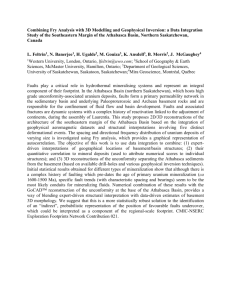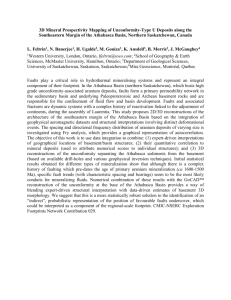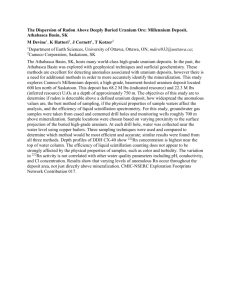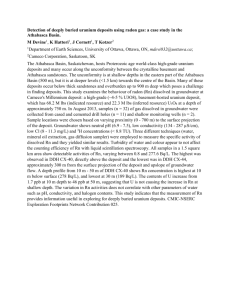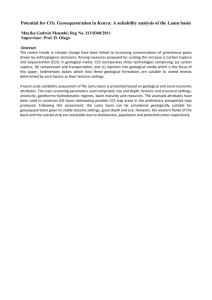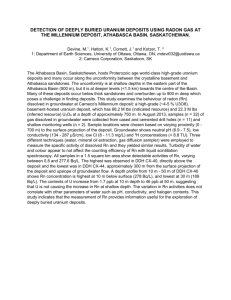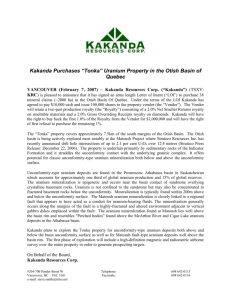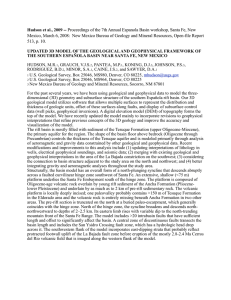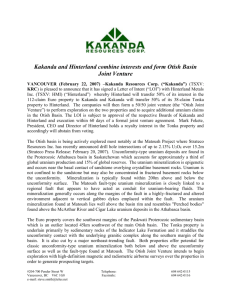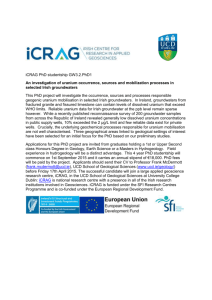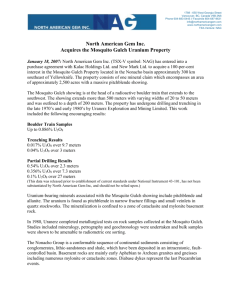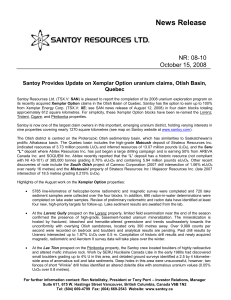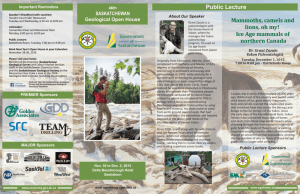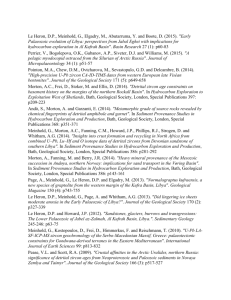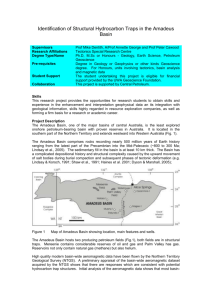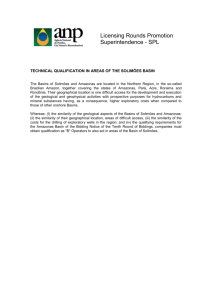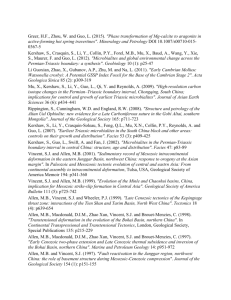Gouiza et al
advertisement
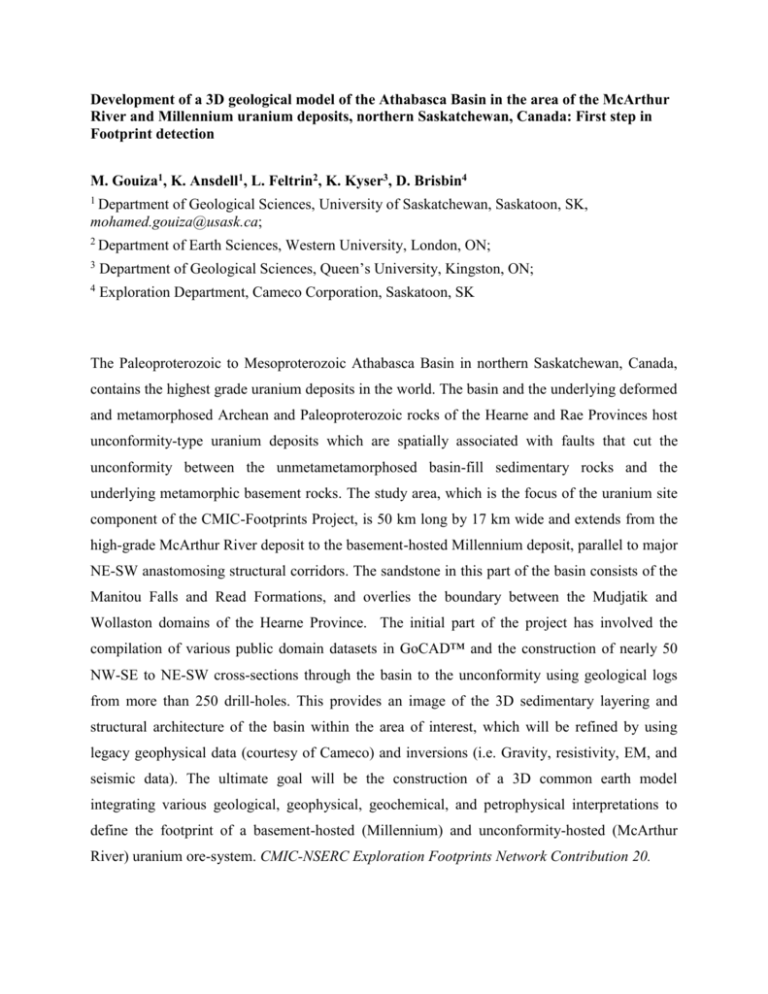
Development of a 3D geological model of the Athabasca Basin in the area of the McArthur River and Millennium uranium deposits, northern Saskatchewan, Canada: First step in Footprint detection M. Gouiza1, K. Ansdell1, L. Feltrin2, K. Kyser3, D. Brisbin4 1 Department of Geological Sciences, University of Saskatchewan, Saskatoon, SK, mohamed.gouiza@usask.ca; 2 Department of Earth Sciences, Western University, London, ON; 3 Department of Geological Sciences, Queen’s University, Kingston, ON; 4 Exploration Department, Cameco Corporation, Saskatoon, SK The Paleoproterozoic to Mesoproterozoic Athabasca Basin in northern Saskatchewan, Canada, contains the highest grade uranium deposits in the world. The basin and the underlying deformed and metamorphosed Archean and Paleoproterozoic rocks of the Hearne and Rae Provinces host unconformity-type uranium deposits which are spatially associated with faults that cut the unconformity between the unmetametamorphosed basin-fill sedimentary rocks and the underlying metamorphic basement rocks. The study area, which is the focus of the uranium site component of the CMIC-Footprints Project, is 50 km long by 17 km wide and extends from the high-grade McArthur River deposit to the basement-hosted Millennium deposit, parallel to major NE-SW anastomosing structural corridors. The sandstone in this part of the basin consists of the Manitou Falls and Read Formations, and overlies the boundary between the Mudjatik and Wollaston domains of the Hearne Province. The initial part of the project has involved the compilation of various public domain datasets in GoCAD™ and the construction of nearly 50 NW-SE to NE-SW cross-sections through the basin to the unconformity using geological logs from more than 250 drill-holes. This provides an image of the 3D sedimentary layering and structural architecture of the basin within the area of interest, which will be refined by using legacy geophysical data (courtesy of Cameco) and inversions (i.e. Gravity, resistivity, EM, and seismic data). The ultimate goal will be the construction of a 3D common earth model integrating various geological, geophysical, geochemical, and petrophysical interpretations to define the footprint of a basement-hosted (Millennium) and unconformity-hosted (McArthur River) uranium ore-system. CMIC-NSERC Exploration Footprints Network Contribution 20.
